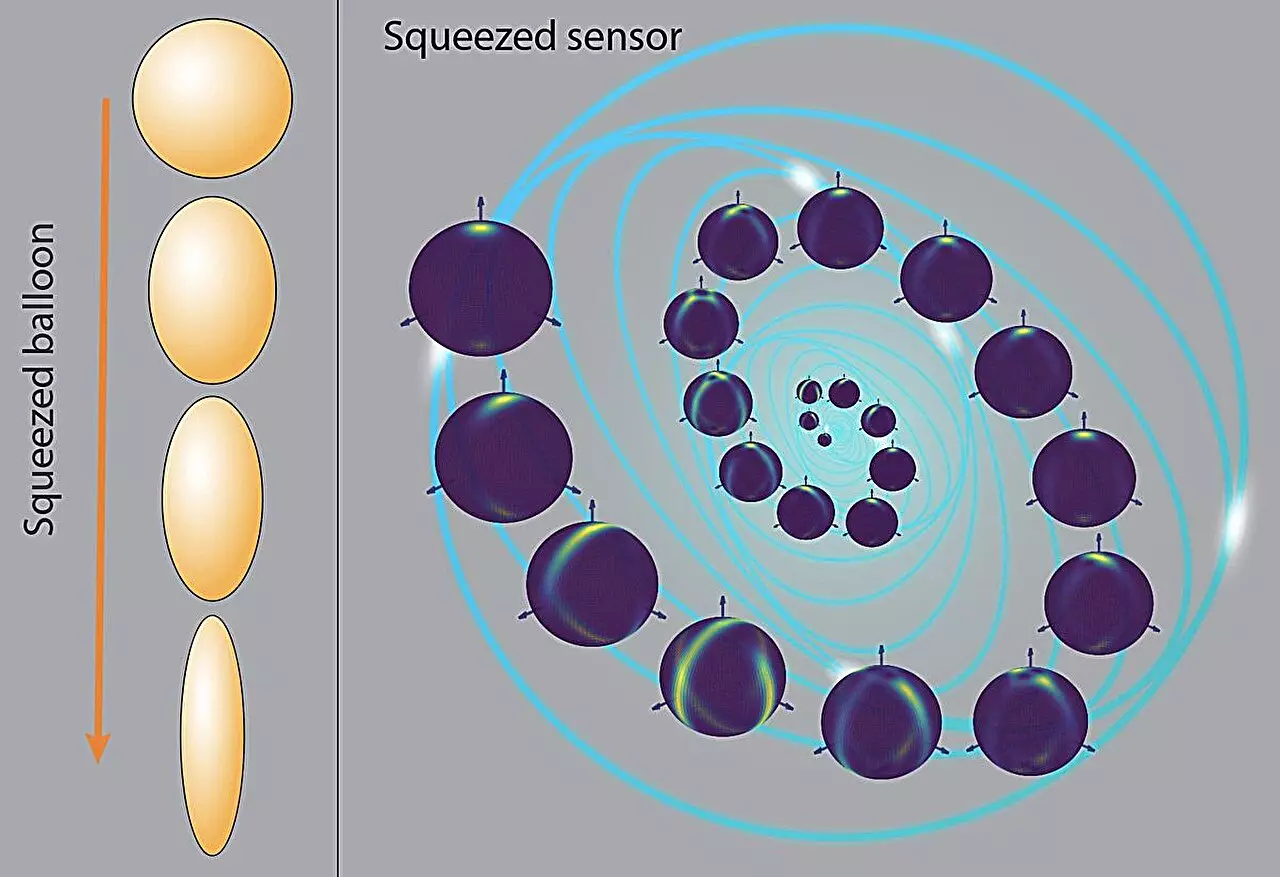Quantum squeezing represents a fundamental principle in quantum mechanics that plays a crucial role in the field of precision measurement. Unlike classical physics, where uncertainty can be minimized without constraints, quantum physics introduces an inherent limitation captured by the Heisenberg Uncertainty Principle. In essence, quantum squeezing involves the manipulation of uncertainties in paired variables—increasing the uncertainty in one while decreasing it in another.
To visualize this phenomenon, consider a round balloon filled with air. When one side of the balloon is squeezed, it flattens, while the opposite side expands. Similarly, in a quantum context, a reduction in the noise surrounding one measurement—such as position—can lead to an increase in uncertainty regarding another, such as momentum. Despite this redistribution of uncertainty, the total remains constant.
Such a phenomenon presents an intriguing opportunity, especially in instances where precise measurements are paramount. For instance, atomic clocks have significantly benefitted from these principles, leading to advancements in timekeeping and navigation technologies.
While achieving high precision measurements in singular contexts has been feasible, the application of squeezing techniques to multivariable situations remains complex. In a recent study published in *Physical Review Research*, Dr. Le Bin Ho of Tohoku University delves into this intricate problem. His research seeks to enhance our understanding of how quantum squeezing can facilitate better measurements when evaluating multiple factors simultaneously, such as a quantum particle’s position and momentum.
Dr. Ho highlights that while traditional measurements form a solid framework, extending these techniques to multiple interacting variables poses substantial challenges. The study acknowledges the difficulty of achieving heightened precision in scenarios involving multifaceted interactions, where entanglement and noise create obstacles.
The ramifications of understanding quantum squeezing extend beyond mere theoretical exploration. Advances in measurement precision have profound implications across various technology sectors. With improved measurement capabilities, quantum imaging can yield sharper results, quantum radars can enhance object detection, and advancements in atomic clocks could refine GPS and timing mechanisms critical for numerous applications.
Additionally, the progress in quantum measurement techniques can substantially impact biophysics. Enhanced MRI technologies, alongside the improved sensitivity of biosensors, stand to benefit from these insights, potentially revolutionizing early disease detection and diagnostic methods.
Dr. Ho’s analysis provides the groundwork for further explorations into how different types of noise impact quantum measurements. By understanding these interactions, researchers can devise methods to mitigate the effects of noise, ultimately leading to technologies that operate with unprecedented precision.
Looking ahead, Dr. Ho envisions broadening the research scope to include diverse types of noise and their interactions with quantum squeezing. This future exploration aims to generate a more comprehensive toolkit for scientists working with quantum technologies, enhancing their ability to manipulate and measure quantum states accurately.
Furthermore, this line of inquiry not only serves immediate technological advancements but also drives forward the broader field of quantum science. By uncovering the mechanisms that govern measurement precision in quantum systems, researchers can push the boundaries of what is possible, leading to innovations previously deemed impractical.
Quantum squeezing presents a fascinating approach to measurement precision, particularly in complex systems where multiple phases are involved. Through the pioneering research contributed by Dr. Le Bin Ho, the potential for technological breakthroughs becomes increasingly tangible. As researchers continue to explore and develop techniques that leverage quantum squeezing, it opens up new avenues for enhancing precision in various scientific and technological applications, promising growth in fields as diverse as imaging, navigation, and medicine. The evolving landscape of quantum measurement stands as a testament to the power of understanding and manipulating the fundamentals of quantum mechanics to achieve unprecedented accuracy.

